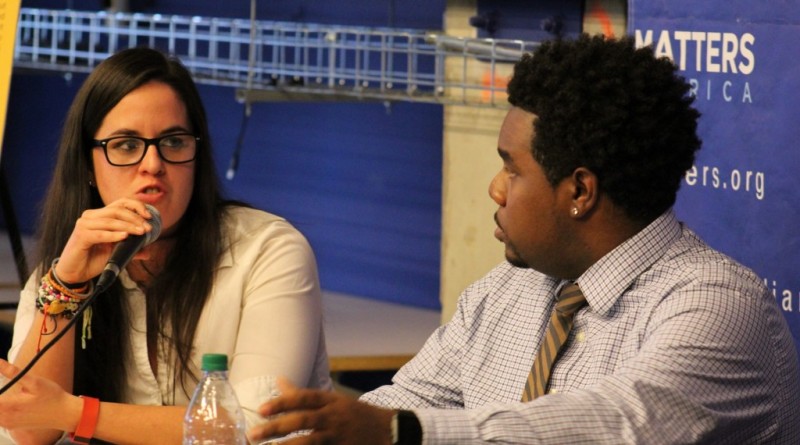Media experts push for diversity, inclusion in newsrooms
By: Erica Y. King – Scripps Howard Foundation Wire
WASHINGTON – Newsrooms need to be more diverse racially and ethnically to report fairly and reduce bias, a group of media experts said Wednesday.
“Both frontline reporters and editors play a major role in how stories are portrayed in the media,” Judith Brown Dianis, co-director of the Advancement Project, a civil rights group, said.
Dianis told a story about a Washington area TV station that covered a fight that took place among several African-American boys on a school bus from her daughter’s middle school in Prince George’s County, Maryland.
“The fight should’ve never made the news because it wasn’t important. … How is this considered breaking news?” she said.
Dianis said that the anchor who introduced the story was an African-American woman.
“We sent a letter to the anchor to say it is her duty to help portray us in the media more than what people already think of us,” she said.

Media professionals Cristina Lopez (L) Mervyn Marcano, Judith Brown Dianis and moderator Danielle Belton. SHFWire photo by Erica Y. King
“Media has this trend of using mugshots when reporting on stories where victims are victims of color,” Lopez said referring to Candelerio Gonzalez, a Florida man who was killed as a result of a road rage incident.
Lopez said a mugshot of Gonzalez used in some reports had no connection to the story. Other stories used a family photo.
“The way the media portrayed him in this story, both English- and Spanish-language media, was by mugshots, despite other alternatives being available,” Gonzalez said.
Dianis spoke about Tamir Rice, a 12-year-old Cleveland boy who was shot and killed by a police officer who though his toy pellet gun was real.
“The media continuously called him a young man, but he was a child,” she said. “He was somebody’s baby.”
Dianis said these two simple words – young man – had so much meaning.
“It may not seem like a big deal, but imagine these stories – including the school fight, being put in our heads over and over again – we begin to think this is all these people are,” she said. “How is a 12-year-old boy suddenly a young man?”
The American Society of News Editors tracks the percentage of minority journalists in daily newspaper newsrooms. The 2015 census found there were about 32,900 full-time journalists at nearly 1,400 daily newspapers, and that 4,200 of those journalists – or 12.76 percent – were minorities. That was a 0.58 percent decrease in the number minority journalists from 2014 to 2015.
A Radio Television Digital News Association 2014 study found that the number of minority journalists in television increased to the highest it’s been in 13 years – 22.4 percent. Women were 38.7 percent of newsroom employees in the 50 largest TV markets, and 44 percent in the top 101 markets.
But racial and ethnic diversity in television has remained unchanged. African-Americans made up 10.4 percent of broadcast journalists 2014, and Asian-Americans made up 2.5 percent.
Although the topic of minorities in the newsroom is nothing new, the speakers pushed the importance of minority inclusion.
“We need to hire more journalists of color,” Marcano said. “Editors need to give space to journalists for the stories they want to tell, and journalists have to be brave enough to tell it.”
Photo: Cristina Lopez says Latinos are portrayed negatively in the media, and Mervyn Marcano says it is important to hire people of color in newsrooms to fix the problem. They spoke at a panel discussion Wednesday. SHFWire photo by Erica Y. King

